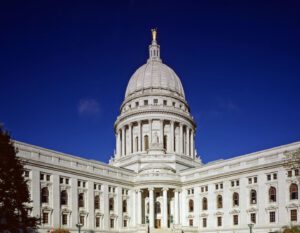Analysis: ESSER program made public education’s future more difficult as Biden financial cliff looms
A research center at Georgetown University (GU) is warning that thousands of public school districts face a “bloodletting” as one-time federal COVID-19 relief funds run out.
“I know [saying…

A research center at Georgetown University (GU) is warning that thousands of public school districts face a “bloodletting” as one-time federal COVID-19 relief funds run out.
“I know [saying ‘bloodletting’] is gory, dramatic language,” GU’s Edunomics Lab Director Marguerite Roza said during a recent presentation. “We are trying to get people’s attention that this is a financial shock to the K-12 system unlike any we’ve seen before.”
Roza warns that staffing cuts will likely be the first resort, and could be deep.
That’s because districts around the country used the temporary COVID-19 relief funds, commonly known as ESSER funds, for permanent budget items such as teachers’ raises and increased staffing.
In their state-by-state analysis, GU’s Edunomics Lab shows that public school staffing has never been higher, a phenomena which it calls “ESSER fueled.”
“Never have we seen such rapid expansion of labor in ed (enabled by ESSER),” said the Lab’s presentation.
The Lab noted the high staffing levels also coincide with plunging student enrollment.
Plunging enrollment is the more persistent financial cliff that public schools are facing.
In fact, ESSER has simply papered-over larger financial problems that many districts face and has also added to the future structural financial weaknesses of many districts.
Florida’s Orange County Public Schools (OCPS), for example, used federally supplied COVID-19 relief funds to “to pay for staff bonuses, hire extra teachers, counselors and social workers and implement programs to help students recover from the ‘learning loss’ when schools closed and lessons shifted online,” according to the Orlando Sentinel.
But they also used the money for substantial pay hikes for teachers in 2022 and again in 2023.
The 2023 pay hikes were called “historic” by the local union, amounting to as much as $5,350 for some teachers.
But after getting over $850 million worth of federal aid since 2020, the district now faces budget cuts of nearly $28 million per year in their $6.7 billion annual budget as ESSER funding runs out.
To put that in perspective, the OCPS Teacher Salary Increase Allocation for school year 2022-2023 was budgeted at just shy of $60 million, according to the FY24 adopted budget examined by The Lion.
By contrast, OCPS paid just $150,992 for the 2020-2021 school year for digital classrooms and distance learning and a combined $24 million for safe schools and mental health this year.
More dramatically, the Philadelphia School District said that with the end of COVID-19 era funding, the district faces budget deficits estimated to be as high as $1.3 billion by 2028 in a budget that today is $4.5 billion.
Not coincidentally, the Philadelphia Federation of Teachers negotiated a 9% pay raise for its members in 2021.
Notably, the Philadelphia Inquirer reported that it’s the first time the district has negotiated an “on time” contract with teachers since 2001.
That dovetailed perfectly into the Biden administration’s design for the ESSER program, which allowed districts to use the federal funds for pay raises in order to pay off labor unions, even though it further weakened some districts’ financial health.
In Philadelphia, were it not for the injection of the ESSER funds, the district would already be broke, according to its chief financial officer.
“As the 2022 budget development approached, the looming deficit was projected at greater than $300 million,” Mike Herbstman, the district’s CFO said, according to the Philadelphia Tribune. “As a result, reductions seemed imminent through effective and efficient use of new federal pandemic funding. The district was able to delay the inevitable.”
But not all districts fell for the trap of ensuring future budget deficits by using ESSER funds.
The Wichita Falls ISD (WFISD) in Texas made the decision to practice fiscal restraint, knowing the ESSER funds would eventually end.
“Hundreds of schools, greater than 600 districts, passed deficit budgets in order to fund their maintenance and operations throughout this past year to give raises, to do all kinds of things,” WFISD Superintendent Dr. Donny Lee told the Wichita Falls Times Record News.
“They are going to face a financial cliff when it comes to the [20]24-25 school year because if they increased funding through salaries, there is no additional funding coming to them from the state. WFISD did not do that,” Lee said.
In Detroit, the superintendent made a conscious decision to avoid investing in recurring items such as staff, and instead spent money on one-time items such as capital investments.
“One thing that I’ve tried to do as superintendent is be disciplined with finances. … I always think about recurring revenue with recurring expenditures, and one-time revenue with one-time expenditures,” Detroit’s Superintendent Nikolai Vitti told Chalkbeat.
He said that school boards are particularly vulnerable to using one-time revenues for recurring expenses.
North Carolina also avoided the pitfalls of recurring expenses, while offering teachers one-time bonuses.
However, plunging enrollment is worsening the financial situation for many districts.
But the burden of that decline will likely be easier for districts that have acted responsibly in avoiding the financial temptations that came with ESSER.



